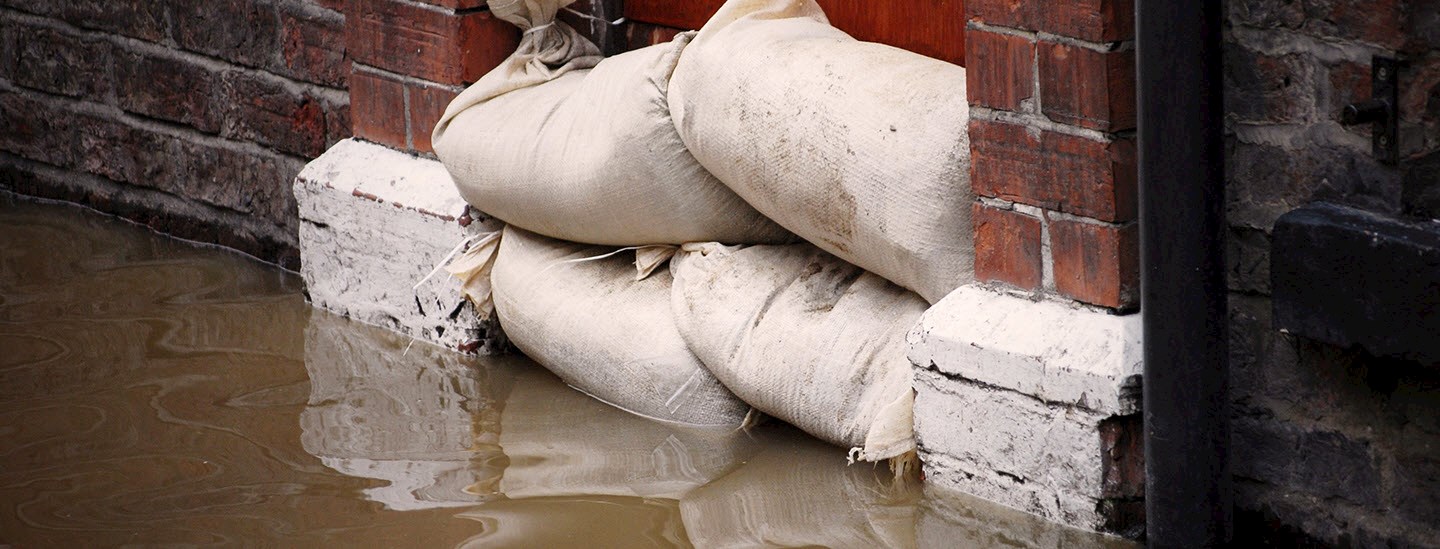When driving in an area where flooding may occur or is currently flooding, take these precautions:
- Don't drive if high water has made roadways impossible to cross.
- Check for downed power lines before crossing water. Listen for humming, which indicates electricity. If signs of electricity exist, don't cross the water.
- Watch for floating debris that could trap you in your vehicle.
Post-flood home inspection guidelines
After receiving the all-clear signal from your local agencies or emergency personnel, you can begin your post-flood measures. Once it's safe to return to your home, examine the interior and exterior of your property and contact your Gallagher representative about your flood coverage. It's important that your claim handler receive this information as soon as possible.
Below is a short checklist of what to inspect after returning to your property after a flood.
Exterior property checklist
- Inspect your property for immediate dangers — watch for animals, particularly snakes, that may have come in with the floodwaters.
- Take pictures or video of the damage and property.
Interior property checklist
- Use flashlights to examine walls, floors, doors and windows to ensure the building isn't in danger of collapsing.
- Inspect the foundations for cracks and other significant damage, paying particular attention to retaining walls.
When inspecting your home, avoid all areas with flooded electrical circuits and submerged power lines or electrical appliances until the power has been cut. Also, watch for flammable materials in the water such as gas. Try to limit use of cellphones, laptops and hand-held radios to preserve battery life in the event of power failure.
You'll also need to contact the following groups after a flood:
- Emergency services — such as the fire department and utility companies — if necessary based on the review of the property.
- Vendors, such as cleaning services, biohazard companies, electricians or plumbers, to help reduce further damage to the property that might result from standing water and to prevent mosquitoes from developing.
Filing a home flood insurance claim
The best way to notify your claim handler of a home flood insurance claim is to immediately and directly report it. It's important that your claim handler receive this information as quickly as possible to begin the claim resolution process. If you need assistance reporting your home flood insurance claim, please contact your Gallagher representative.
Your insurance company's website will contain important information about how to handle claims and manage losses. We have listed many insurance companies in the event you don't have the contact information readily available.
CLAIMS CONTACTS FOR PERSONAL HOME AND AUTO INSURANCE
Starting a home flood insurance claim
To initiate a home flood insurance claim and begin an investigation, the adjuster must have as much detail as possible. We recommend the following:
- Provide photographs and/or video of the damage.
- Include a preliminary list of damages.
- Secure your location to prevent further loss and begin to sort damaged items from undamaged items.
Claims process for home flood insurance: What to expect
Your adjuster will manage the claim-investigation process. If you have concerns, you can reach out to your Gallagher advocate with specific policy and claim questions. During this high-volume reporting period, you should anticipate the following:
- The adjuster assignment and initial contact may take some time. Some insurers may use adjusters under contract rather than staff adjusters, so the adjuster's contact information may appear different from expected.
- Access to the affected areas may be limited for a long time after the floodwaters recede.
- Competition for labor and materials will be high, which could impact the timeframe and costs associated with repair and remediation.
- You'll work with your adjuster closely. If you have questions regarding the resolution process, your Gallagher representative is here to assist and ensure you are in control of the claim process.

